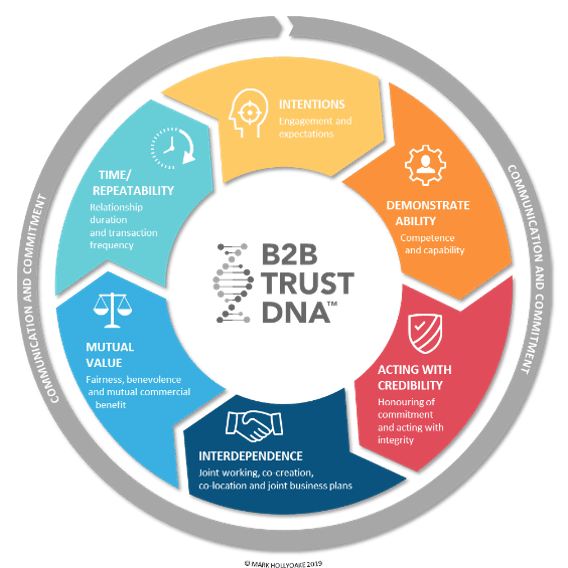As a break from our current focus on presenting, let’s turn our focus to listening to your customers and your employees.
For this topic, welcome back guest blogger Peter Lavers. Peter consults, advises, speaks and writes about Customer Experience. He has shared with us before on topics including preparing for Digital Humans, Trust and Data-led Marketing.
In this post, Peter shares his experience of businesses not joining up their listening to customer programmes with the same for their employees. He also shares a model of Trust Development that explains why you need to integrate. Over to Peter to share from his experience and some pioneering research into Trust…
Why do businesses isolate their VoC and VoE programmes?
In my many years as a practitioner & consultant in the field of Customer Management, I’ve often wondered why businesses treat their Voice of Customer (VoC) & Voice of Employee (VoE) studies as completely different dissociated exercises.
The links between customer and staff satisfaction, ease of working/doing business, and advocacy are very well established. Yet the programmes to understand and manage these are all too often divorced within the organisation.
Typically, the Market Research or Customer Experience (CX) Department will manage VoC programmes. The HR Department will run VoE and cultural assessments. Each will have specific research objectives, methodologies and key questions.
Both may be outsourced to different agencies, or one outsourced and one conducted in-house. Such studies tend to be repeated, so both have rich historical data. However, rarely will they be aligned, coordinated, or even correlated.
Why do they persist in doing this?
It’s another example of silo-working and business management that is not customer-centric. There are good reasons for drawing on differing expertise concerning CX and corporate culture. But there’s no excuse for neglecting to glean valuable insights from bringing together those findings into the bigger picture.
It is never more important as when it comes to trust within B2B relationships. My colleague Dr Mark Hollyoake has proved this in his seminal work on B2B trust. This establishes how trust works on a multi-level context on both sides of the relationship.
A new definition of Trust in B2B relationships
The research shows that the triggers and critical incidents for deepening or damaging trust are not the same. Nor do they have equal importance across both sides of the relationship or within different levels of seniority and engagement. It has resulted in a ground-breaking redefinition of B2B trust:
“The willingness to be vulnerable to another party and the decision to engage in actions based upon an interpretation of their ability, credibility and the expectations of mutual value exchange over time.”
Dr Mark Hollyoake (2020)
One of the strengths of this definition is that it clearly works both ways. Each side is entrusting an element of the success of their business to the other.
Trust requires organisation-wide action & collaboration
Trust development requires an organisation-wide approach, and Mark’s work has resulted in the Trust DNA™ model (illustrated below). This enables the proactive and systemic nurturing (and rebuilding if required) of trust within your B2B relationships. Here’s a visual summary:

You can see a detailed unpacking of this model by clicking here.
Your VoC & VoE surveys can join up in one Evaluator
The above model also powers our B2B Trust Evaluator, which is more than “just another survey“.
It is directly built upon the academic research, which confirms that a “one questionnaire fits all” approach can only skim the surface of B2B trust. Mark’s analysis developed an indexed catalogue of incidents, behaviours and attitudes that either build or impair trust.
This new approach draws down the right questions to ask the different stakeholders that have been proven to matter to them. Please get in touch if you would like to find out more about joining up your VoC and VoE programmes. This approach can enable you to evaluate and manage trust on both sides of your key relationships.
How could you join up your listening programmes?
Thanks to Peter for sharing his thinking on that topic and the model that his business, Customer Attuned, has developed to guide their services. I hope that spur to join up your VoC and VoE programmes helps you.
Listening to Peter also reminded me of a post shared by Richard Kimber. In that post, he advised listening to VoC, VoE and what he called “Voice of the Process (VoP)”. It’s worth a read too if you’re interested in this topic.
But let’s get practical. What can you do to stop your VoC and VoE programmes operating in glorious isolation? I’d love to hear your suggestions and anything you’ve learnt by bringing them together.
Related: How Are You Going to Make Your Work Meaningful This Year?

